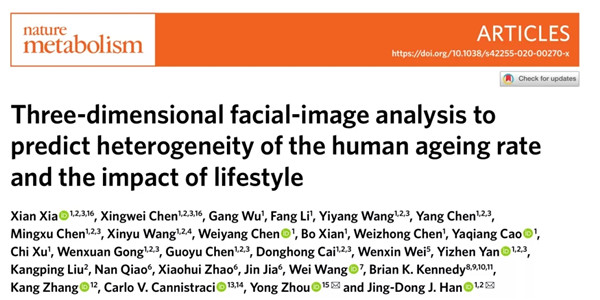Home> Science Outreach
Researchers establish 3D facial image AI models to predict biological age, impact of lifestyle on aging rate
Updated: 2020-09-09

The research article was published by Chinese researchers in Nature Metabolism on Sept 7. [Photo/WeChat account of BSC]
A research article entitled "Three-dimensional facial image analysis to predict biological age, heterogeneity of ageing rate, and impact of lifestyles" was published by Chinese researchers in the prestigious international online journal Nature Metabolism on Sept 7.
The paper provided an example of how artificial intelligence (AI) can be leveraged to determine the perceived age of humans as a marker of biological age, while no longer relying on prediction errors of chronological age -- and to estimate the heterogeneity of ageing rates within a population.
The research in the paper was conducted by Han Jingdong's research group from Peking University and the CAS-MPG Partner Institute for Computational Biology, the Shanghai Institute of Nutrition and Health of the Chinese Academy of Sciences -- together with a research group led by Zhou Yong.
Han's research group published the first 3D facial image-based age predictor in 2015, which caught the attention of the public.
This technology achieved an error of 6.2 years and compared with other ageing clocks, is non-invasive and economic, thus allowing rapid and large-scale data collection.
The newly published study extended the facial age prediction to a new AI-based model -- by collecting 3D facial images from some ~5,000 Han Chinese, together with baseline information.
Researchers established a robust non-linear age predictor that achieved an average error between chronological/perceived age and predicted age of only ±2.79/2.90 years.
